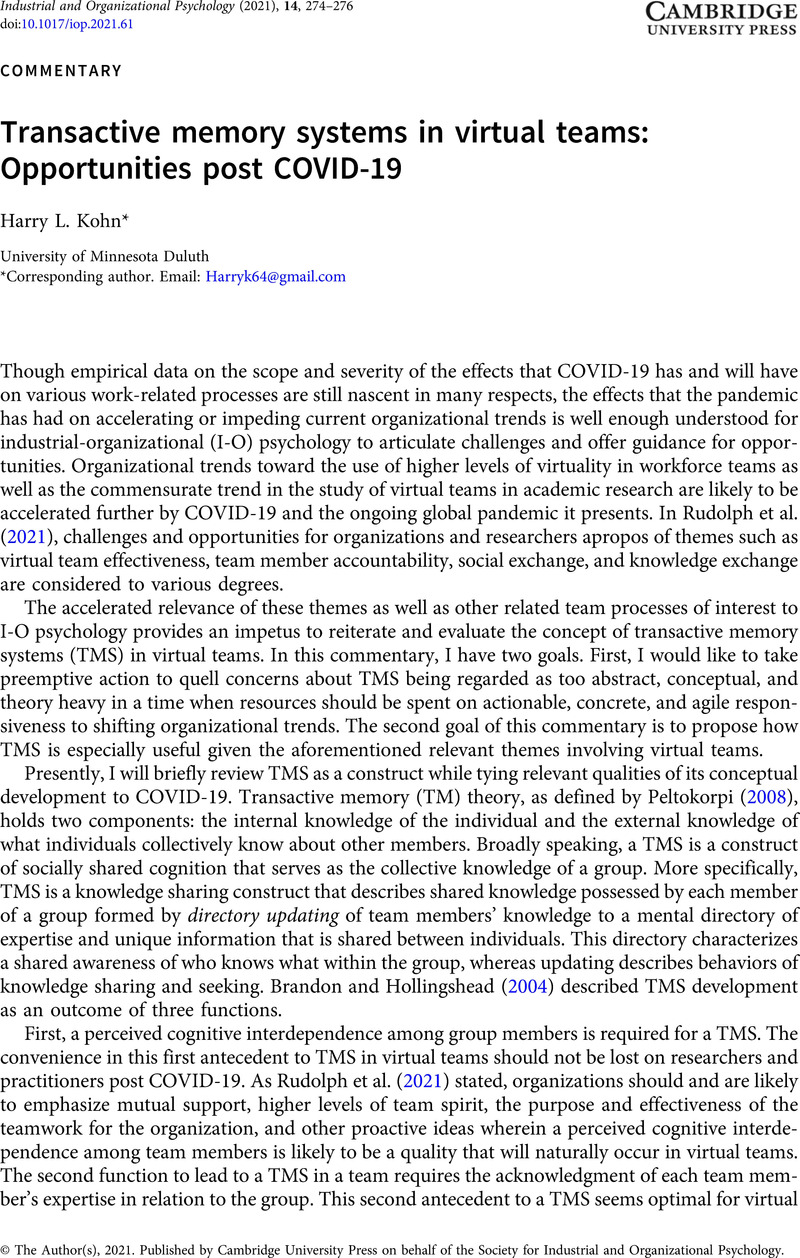Crossref Citations
This article has been cited by the following publications. This list is generated based on data provided by Crossref.
Zheng, Shi
Yan, Ming
Liang, Yongyi
Chen, Yuanyi
Wei, Qi
and
Li, Shengwen
2024.
Understanding the positive and negative effects of team virtuality: A theoretical review and research agenda.
Human Resource Management Review,
Vol. 34,
Issue. 2,
p.
101013.
Roigé, Xavier
Canals, Alejandra
and
Rico, Marta
2024.
Creating memory of COVID-19: The actions of museums and archives in Spain.
Memory Studies,
Vol. 17,
Issue. 2,
p.
193.





